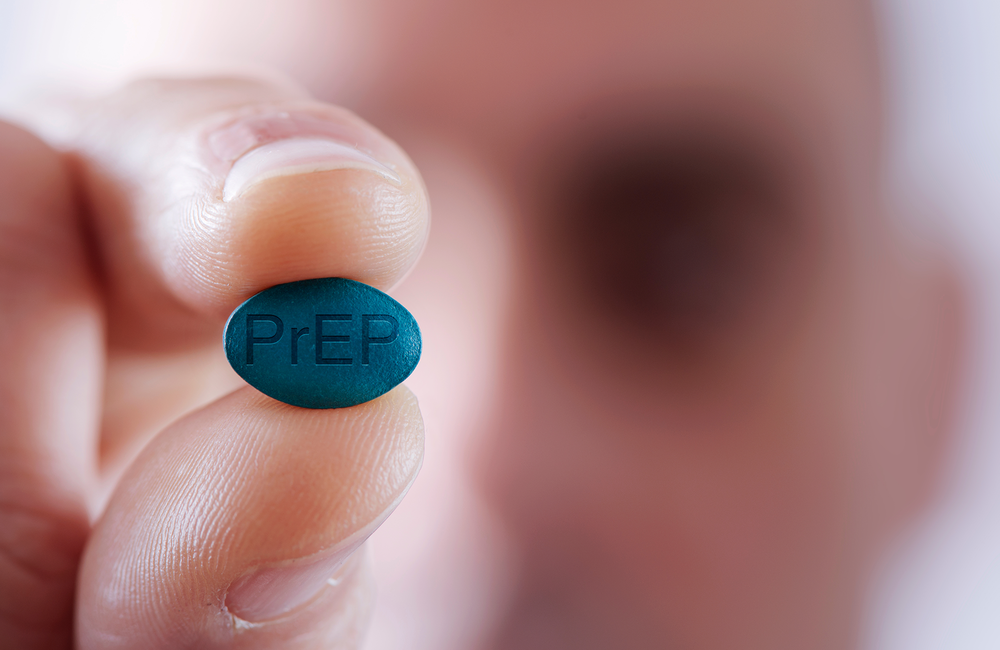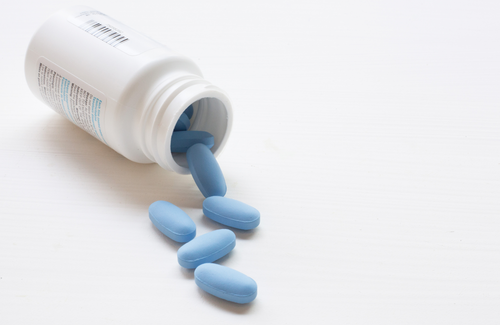
It may be very difficult to tell if someone who has just started HIV pre-exposure prophylaxis (PrEP) has actually caught HIV just before or just after they started PrEP.
This is what seems to have happened in a case where a 31-year-old man from New York, who had just started PrEP, had multiple inconsistent HIV test results shortly after starting. Even though he was put on a third drug as a precaution after a very weak positive result 28 days after starting PrEP, his HIV test results were still inconsistent for some time after this.
It was eventually concluded that this patient had probably caught HIV shortly before starting PrEP – but that the two PrEP drugs he was taking, while not stopping the infection, suppressed his HIV so it was difficult to detect. In theory, people like this could be on PrEP for a considerable time before testing positive, with implications for the development of resistance.
Guidelines emphasise that people starting PrEP should always take an HIV test before starting to rule out the possibility they already have HIV. This is important because the two drugs currently comprising PrEP, while effective at preventing HIV, are not strong enough to treat established infection.
It had been known from the early days of PrEP research in animals, however, that even if PrEP fails it can cause a so-called ‘blunted’ HIV infection with a lower viral load and a weaker antibody response than usual, and the same could happen if infection occurs just before PrEP is started.
As the writer says, while guidelines recommend that people taking PrEP test for HIV every three months, they “provide no guidance on optimal screening for, and management of, acute/early infection specifically amongst individuals on PrEP,” and current tests may be inadequate to detect HIV infection in these circumstances.
Case summary
The patient was a 31-year-old gay man who came to a New York clinic to be assessed for PrEP. He disclosed multiple anal sex partners during the previous three months, including ones known to have HIV, and inconsistent condom use.
As part of the assessment, he was given an HIV test and received the result that day. This was a 3rdgeneration HIV ELISA test that also included a pooled HIV RNA test. The “window period” for 3rd generation tests is around three weeks and adding in an RNA test which detects the presence of HIV itself, rather than antibodies to it, brings the window period down to under two weeks, though RNA tests in early infection are not always accurate.
He started PrEP seven days later and was given a 30-day supply. At this point, he was also given a 4th generation HIV test, whose window period is about two to three weeks, according to most guidelines. This was also negative and the result received that day.
Four weeks later the patient returned to the clinic, saying he had taken all his daily PrEP doses. At this point, he was given another 4th generation HIV test. This was very weakly HIV positive.
Positive results from ELISA tests like this, which basically give a ‘yes/no’ answer to whether HIV antibodies are present or not, are always confirmed by a second test that detects antibodies to the different HIV proteins. A confirmatory test was done with the Geenius HIV-1/2 test, which is a successor to the old Western Blot assay. This was negative.
A negative confirmatory test is not uncommon in recent infection, because antibodies to individual proteins may take longer to develop. It is standard practice in these cases to test for HIV RNA again, as this can be detected sooner than antibodies and so a blood sample was sent off to the New York Department of Health for an ultrasensitive test to detect the presence of HIV RNA.
Because HIV infection seemed possible, the 4th generation test was performed again four days later – and this time was negative, as was yet another HIV RNA test. However, as a precaution, even though at this point the patient had had only one weakly positive result from one test, a third drug (dolutegravir) was added to his PrEP regimen.
He was tested again ten days later and this time the 4th generation antibody test was HIV positive, though still rather weakly, and a yes/no RNA test was also positive. The RNA test sent to the New York Department of Health also eventually came back HIV positive. This was regarded as strong enough evidence of HIV infection for him to be switched to an HIV combination therapy regimen that did not include the PrEP drugs tenofovir or emtricitabine.
However, a quantitative HIV RNA test – i.e. one that actually counts viral load, with a lower limit of 20 copies/ml – was negative, indicating an extremely low viral load, and a test for integrated HIV DNA also found none. The Geenius antibody-assay test was only reactive to one HIV protein, the gp41 protein that forms the ‘spikes’ on the viral surface and was therefore deemed "indeterminate".
PrEP failure or test failure?
There is no reason to suspect PrEP failure in this case. The patient disclosed high-risk sex up to the time he started PrEP, including in the week between his first and second negative HIV tests. The most likely scenario is that he was infected a few days before starting PrEP or even the day or two afterwards, at the time PrEP drug levels were reaching maximum.
However, while this does not point to PrEP failure, it certainly points to test failure – or at least a poor ability to detect HIV infection in a context where someone has just started PrEP. Our current tests may not be sufficiently sensitive or discriminating to detect HIV infection when the levels of HIV antigens and RNA may be suppressed by PrEP, and the resultant antibody response to them is very weak.
As the researchers point out, this may not be an uncommon occurrence, especially in situations where people are taking PrEP intermittently and restarting it immediately before or even after taking a risk. Patients need to be counselled not only that PrEP needs to be started sufficiently in advance of taking a risk, but also that an infection acquired just before or after starting PrEP may be hard to detect, at least initially.
The writer comments that RNA qualitative and viral load tests may need to be more finely tuned to pick out the HIV ‘signal’ from the background noise, and there may even need to be new tests that detect novel markers of HIV infection.
Zucker J. Positive or not, that is the question: HIV testing for individuals on pre-exposure prophylaxis (PrEP). JAIDS 78 (2) p. e11-e13. DOI: 10.1097/QAI.0000000000001665

